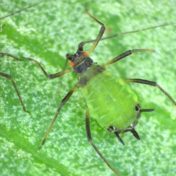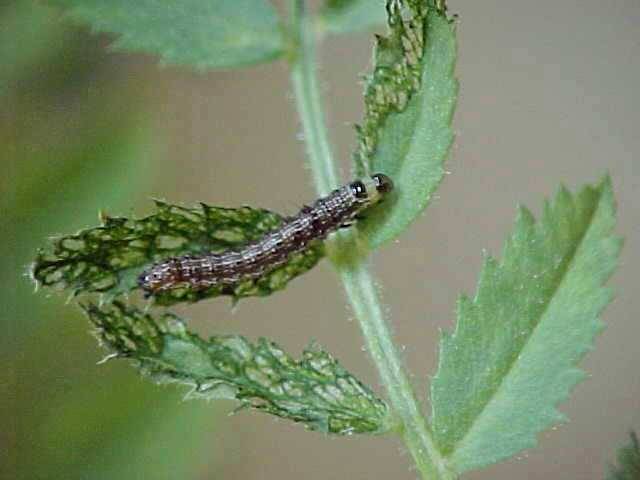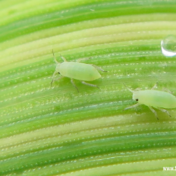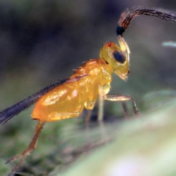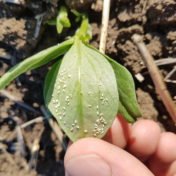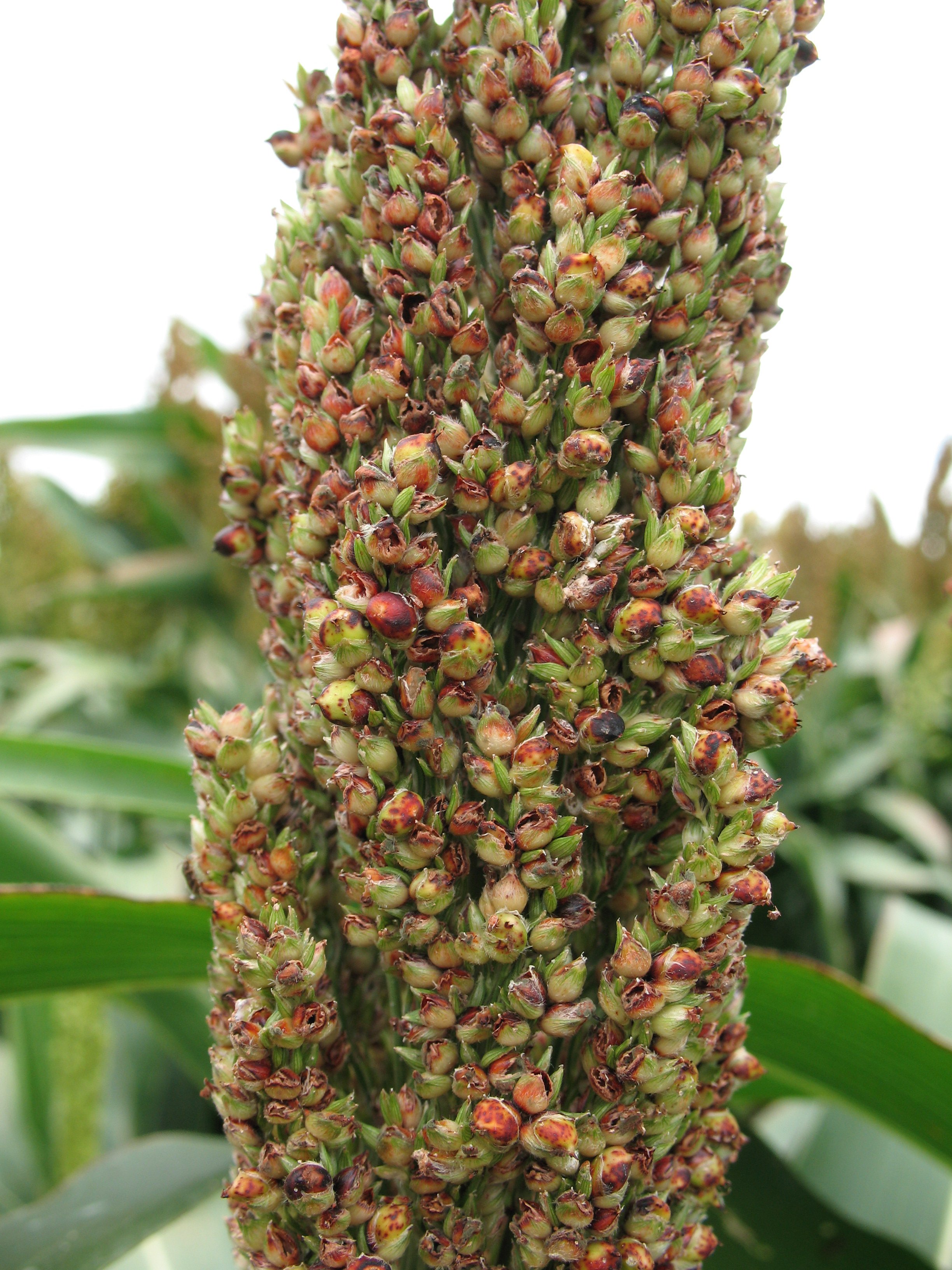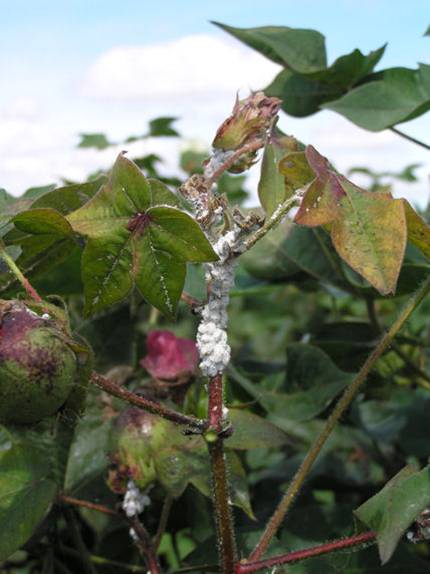Megoura crassicauda has been found in parts of north-east and central New South Wales (Sydney, Tamworth, and Breeza). The species originated in north-east Asia, and is closely related to the vetch aphid (Megoura viciae), found in Europe, Ethiopia and North America. Its host range is mostly limited to Vicia species – vetches, faba or broad beans, and may extend to… Read more »
Helicoverpa are the primary insect pest of chickpeas. Beneficial insects that are present in many crops do not thrive in chickpeas, so successful helicoverpa management relies heavily on monitoring and identification, appropriately timing control to crop stage, and using the recommended thresholds. Monitoring involves regular in-field checking with a beat sheet. Additionally, moth numbers can be monitored using pheromone traps… Read more »
Russian wheat aphid (RWA) is considered a high priority pest by the grains industry because of its potential to cause significant yield losses in wheat and barley if not well managed. Triticale and rye are also susceptible to crop loss, but oats are considered relatively tolerant. It is inevitable that RWA will establish in the northern grains region, but we… Read more »
Of importance to agronomists is how pest populations are changing over time and the likely impact predators will have on the pest population. Predator and parasitoid activity can be difficult to assess under field conditions, particularly the rate at which beneficials can find pest species. In this research, sentinel prey were used to gauge the level of natural predator and… Read more »
The tiny wasp Eretmocerus hayati is an important natural enemy of silverleaf whitefly (SLW) and contributes to the natural biological control of this pest throughout the season. It occurs in almost all regions that grow cotton, but due to its small size (difficult to see without a hand lens) it often goes unnoticed. Like all natural enemies, Eretmocerus is susceptible… Read more »
This summer silverleaf whitefly (SLW) populations have been extremely high in many cotton crops, particularly in NSW. As these crops are defoliated, large numbers of SLW are moving out of the cotton into surrounding vegetation, including emerging grain crops. Whilst the number of SLW adults landing in seedling canola, wheat, faba beans and cereals can look dramatic, previous experience has… Read more »
The spread of Russian wheat aphid (RWA) (Diuraphis noxia) in the Northern grains region is considered inevitable. When it might be detected in wheat and barley is less clear as the key drivers of its spread are not well understood in Australia. Wind is likely to play a part in moving winged aphids from south to north. The most northerly… Read more »
Rutherglen bug (RGB) numbers are persisting in many sorghum crops as they start to reach physiological maturity. Queensland Department of Agriculture and Fisheries (DAF) research has shown no evidence of yield loss as a result of direct feeding on grain once it reaches physiological maturity (black layer). However, because most crops this year have staggered head emergence, there are a… Read more »
With the current season shaping up to be one of high insect pressure, we may see silverleaf whitefly (SLW), Bemisia tabaci reach problematic levels in regions outside of their traditional range. For growers and agronomists not familiar with their control it is worth investing some time to understand how one of the main registered insecticides, pyriproxyfen, works. What is pyriproxyfen?… Read more »
Solenopsis mealybug can be found throughout Queensland’s cropping areas and has also been confirmed in Western Australia, the Northern Territory and Victoria. Whilst solenopsis has not yet been confirmed in NSW cotton crops it would be reasonable to assume that it is likely to be present in the broader landscape and it is only a matter of time before it… Read more »
